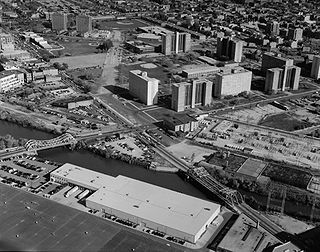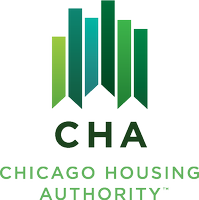Results
The suburban and urban participants started out identical: all were selected from the same pool of callers, and were randomly placed into private apartments in either suburban or urban locations. After several years, the suburban and urban participants had very different outcomes. The urban participants were likely to remain on the welfare rolls, but their suburban counterparts were very likely to find employment and leave welfare. The urban participants' children were likely to drop out of high school, but their suburban counterparts are likely to graduate from high school and even college. The program participants' children were initially below the academic level of their classmates, but because only a few families were moved to each suburbs, the suburban teachers could take time with each new child and tutor each child individually until the children were at the same level as their classmates.
The sociologist James Rosenbaum who studied the Gautreaux project testified before the US Congress on the success of the program, and it has become a model for similar programs in 33 metropolitan areas and inspired the national Moving to Opportunity (MTO) program.
Some housing departments misinterpreted the results of the Gautreaux project, and used it as justification for emptying and demolishing public housing, as a result of which thousands of public housing residents at a time moved to the same suburbs and overwhelmed the suburbs' resources with urban problems. Gautreaux intentionally moved only a few public housing residents to each suburb.

The United States Department of Housing and Urban Development (HUD) is a Cabinet department in the executive branch of the United States federal government. Although its beginnings were in the House and Home Financing Agency, it was founded as a Cabinet department in 1965, as part of the "Great Society" program of President Lyndon Johnson, to develop and execute policies on housing and metropolises.

Cabrini–Green Homes, which comprised the Frances Cabrini Row-houses and William Green Homes, was a Chicago Housing Authority (CHA) public housing project located on the Near North Side of Chicago, Illinois, United States. It was bordered by W North Ave on the north, N Halsted St on the west, W Chicago Ave on the south, and N Larrabee St on the east.
Section 8 of the Housing Act of 1937, often called Section 8, as repeatedly amended, authorizes the payment of rental housing assistance to private landlords on behalf of low-income households in the United States. Fort Lauderdale, Florida Housing Authority Director, William H. Lindsey, upon the advice of Housing Authority attorney, J.Richard Smith, initially developed 11(b) financing in the early 1970's to accommodate a local savings and loan interested in assisting with urban renewal projects Mr. Lindsey eventually brought to fruition. This was the initial impetus for the subsequent development of the now well known Section 8 Program. Of the 5.2 million American Households that received rental assistance in 2018, approximately 1.2 million of those households received a Section 8 based voucher. 68% of total rental assistance in the United States goes to seniors, children, and those with disabilities. The U.S. Department of Housing and Urban Development manages Section 8 programs.
Hills v. Gautreaux, 425 U.S. 284 (1976), was a decision of the United States Supreme Court.
HOPE VI is a program of the United States Department of Housing and Urban Development. It is intended to revitalize the worst public housing projects in the United States into mixed-income developments. Its philosophy is largely based on New Urbanism and the concept of defensible space.

The Chicago Housing Authority (CHA) is a municipal corporation that oversees public housing within the city of Chicago. The agency's Board of Commissioners is appointed by the city's mayor, and has a budget independent from that of the city of Chicago. CHA is the largest rental landlord in Chicago, with more than 50,000 households. CHA owns over 21,000 apartments. It also oversees the administration of 37,000 Section 8 vouchers. The current acting CEO of the Chicago Housing Authority is Eugene Jones, Jr.
James E. Rosenbaum, is a Professor of Sociology, Education, and Social Policy at Northwestern University.
Moving to Opportunity for Fair Housing (MTO) was a randomized social experiment sponsored by the United States Department of Housing and Urban Development (HUD) in the 1990s among 4600 low-income families with children living in high-poverty public housing projects.
The Logan Fontenelle Housing Project was a historic public housing site located from 20th to 24th Streets, and from Paul to Seward Streets in the historic Near North Side neighborhood of Omaha, Nebraska, United States. It was built in 1938 by the Public Works Administration for housing working-class families. With the loss of thousands of industrial jobs in the 1950s and 1960s, the project became filled with families on welfare. As problems increased in the 1970s and 1980s, Logan Fontenelle was referred to as "Little Vietnam" because of drug dealing and gang violence. After Logan Fontenelle residents won a 1991 civil rights lawsuit brought against the Omaha Housing Authority and the U.S. Department of Housing and Urban Development, HUD tore down the projects in 1995 to replace them with new, lower density housing.

Residential segregation in the United States is the physical separation of two or more groups into different neighborhoods—a form of segregation that "sorts population groups into various neighborhood contexts and shapes the living environment at the neighborhood level". While it has traditionally been associated with racial segregation, it generally refers to any kind of sorting based on some criteria populations.

Housing segregation in the United States is the practice of denying African American or other minority groups equal access to housing through the process of misinformation, denial of realty and financing services, and racial steering. Housing policy in the United States has influenced housing segregation trends throughout history. Key legislation include the National Housing Act of 1934, the GI Bill, and the Fair Housing Act. Factors such as socioeconomic status, spatial assimilation, and immigration contribute to perpetuating housing segregation. The effects of housing segregation include relocation, unequal living standards, and poverty. However, there have been initiatives to combat housing segregation, such as the Section 8 housing program.

Subsidized housing in the United States is administered by federal, state and local agencies to provide subsidized rental assistance for low-income households. Public housing is priced much below the market rate, allowing people to live in more convenient locations rather than move away from the city in search of lower rents. In most federally-funded rental assistance programs, the tenants' monthly rent is set at 30% of their household income. Now increasingly provided in a variety of settings and formats, originally public housing in the U.S. consisted primarily of one or more concentrated blocks of low-rise and/or high-rise apartment buildings. These complexes are operated by state and local housing authorities which are authorized and funded by the United States Department of Housing and Urban Development (HUD). More than 1.2 million households currently live in public housing of some type. Subsidized apartment buildings, often referred to as housing projects, have a complicated and often notorious history in the United States. While the first decades of projects were built with higher construction standards and a broader range of incomes and same applicants, over time, public housing increasingly became the housing of last resort in many cities. Several reasons have been cited for this negative trend including the failure of Congress to provide sufficient funding, a lowering of standards for occupancy, and mismanagement at the local level. Furthermore, housing projects have also been seen to greatly increase concentrated poverty in a community, leading to several negative externalities. Crime, drug usage, and educational under-performance are all widely associated with housing projects, particularly in urban areas.

Blueprint for Disaster: The Unraveling of Chicago Public Housing is a history of the public housing program in Chicago.
Concentrated poverty concerns the spatial distribution of socio-economic deprivation, specifically focusing on the density of poor populations. Within the United States, common usage of the term concentrated poverty is observed in the fields of policy and scholarship referencing areas of "extreme" or "high-poverty." These are defined by the US census as areas where "40 percent of the tract population [lives] below the federal poverty threshold." A large body of literature argues that areas of concentrated poverty place additional burdens on poor families residing within them, burdens beyond what these families' individual circumstances would dictate. Research also indicates that areas of concentrated poverty can have effects beyond the neighborhood in question, affecting surrounding neighborhoods not classified as "high-poverty" and subsequently limiting their overall economic potential and social cohesion. Concentrated poverty is a global phenomenon, with prominent examples world-wide. Despite differing definitions, contributing factors, and overall effects, global concentrated poverty retains its central theme of spatial density. Multiple programs have attempted to ameliorate concentrated poverty and its effects within the United States, with varying degrees of progress and to sometimes detrimental effect.
Discrimination in awarding Section 8 housing describes alleged or confirmed cases of illegal discrimination in the housing market of the United States of America, "Section 8" being a portion of a 1937 law that provides financial assistance for housing costs of several million low-income Americans.

The Ida B. Wells Homes was a Chicago Housing Authority (CHA) public housing project that was located in the Bronzeville neighborhood on the South Side of Chicago, Illinois. It was bordered by Dr. Martin Luther King Drive on the west, Cottage Grove Avenue to the east, 37th Street to the north, and 39th Street to the south. The Ida B. Wells Homes consisted of rowhouses and mid- and high-rise apartment buildings and were constructed for African Americans from 1939 to 1941. They were demolished beginning in 2002 and ending in 2011.

Hilliard Towers Apartments, formerly known as the Raymond Hilliard Homes CHA housing project, is a residential high-rise development in the near South Side of Chicago, Illinois. It was designed by Bertrand Goldberg and is located between Clark Street, State Street, and Cermak Road. In 1999, it was placed on the National Register of Historic Places as the Raymond M. Hilliard Center Historic District.
Moving to Work (MTW) is a demonstration program for public housing authorities (PHAs) that provides them the opportunity to design and test innovative, locally designed strategies that use Federal dollars more efficiently, help residents find employment and become self-sufficient, and increase housing choices for low-income families. MTW gives PHAs exemptions from many existing public housing and voucher rules and more flexibility with how they use their Federal funds. PHAs can use special funding formulas for MTW agencies and permit agencies to shift funds between the programs or to other uses.
The Rental Assistance Demonstration is a federal housing program that was enacted as part of the Consolidated and Further Continuing Appropriations Act, 2012, and is administered by the U.S. Department of Housing & Urban Development (HUD). Broadly, the purpose of the Rental Assistance Demonstration is to provide a set of tools to address the unmet capital needs of deeply affordable, federally assisted rental housing properties in order to maintain both the viability of the properties and their long-term affordability. It also simplifies the administrative oversight of the properties by the federal government. Specifically, RAD authorizes the conversion of a property's federal funding from one form to another, where the initial form presents structural impediments to private capital investment and the new form is not only familiar to lenders and investors but, since its enactment in 1974, has leveraged billions in private investment for the development and rehabilitation of deeply affordable rental housing.

Stefanie Deluca is a sociologist and the James Coleman Professor of Sociology at Johns Hopkins University. She co-wrote the book, Coming of Age in the Other America. Deluca received her Ph.D. in Human Development and Social Policy at Northwestern University in 2002 and bachelor’s degrees in Psychology and Sociology at the University of Chicago.








